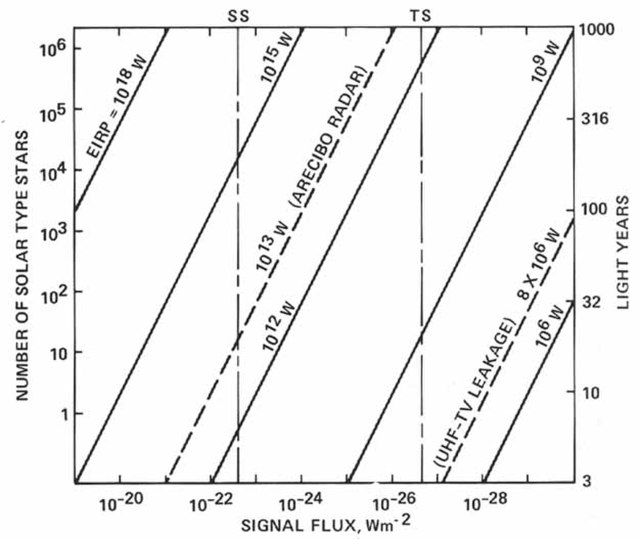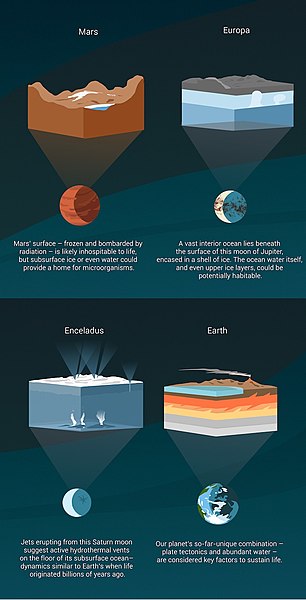Search for extraterrestrial intelligence
The search for extraterrestrial intelligence (SETI) is a collective term for scientific searches for intelligent extraterrestrial life, for example, monitoring electromagnetic radiation for signs of transmissions from civilizations on other planets.
The Wow! Signal
Sensitivity vs range for SETI radio searches. The diagonal lines show transmitters of different effective powers. The x-axis is the sensitivity of the search. The y-axis on the right is the range in light-years, and on the left is the number of Sun-like stars within this range. The vertical line labeled SS is the typical sensitivity achieved by a full sky search, such as BETA above. The vertical line labeled TS is the typical sensitivity achieved by a targeted search such as Phoenix.
Arecibo Telescope in Puerto Rico with its 300 m (980 ft) dish was one of the world's largest filled-aperture (i.e. full dish) radio telescope and conducted some SETI searches.
Microwave window as seen by a ground based system. From NASA report SP-419: SETI – the Search for Extraterrestrial Intelligence
Extraterrestrial life, alien life, or colloquially simply aliens is life which does not originate from Earth. No extraterrestrial life has yet been conclusively detected. Such life might range from simple forms such as prokaryotes to intelligent beings, possibly bringing forth civilizations that might be far more advanced than humanity. The Drake equation speculates about the existence of sapient life elsewhere in the universe. The science of extraterrestrial life is known as astrobiology.
Besides Earth, Mars, Europa and Enceladus are the most likely places in the Solar System to find life.
Lifeforms produce a variety of biosignatures that may be detectable by telescopes.
The Green Bank Telescope is one of the radio telescopes used by the Breakthrough Listen project to search for alien communications.
Artist's impression of Gliese 581 c, the first terrestrial extrasolar planet discovered within its star's habitable zone








